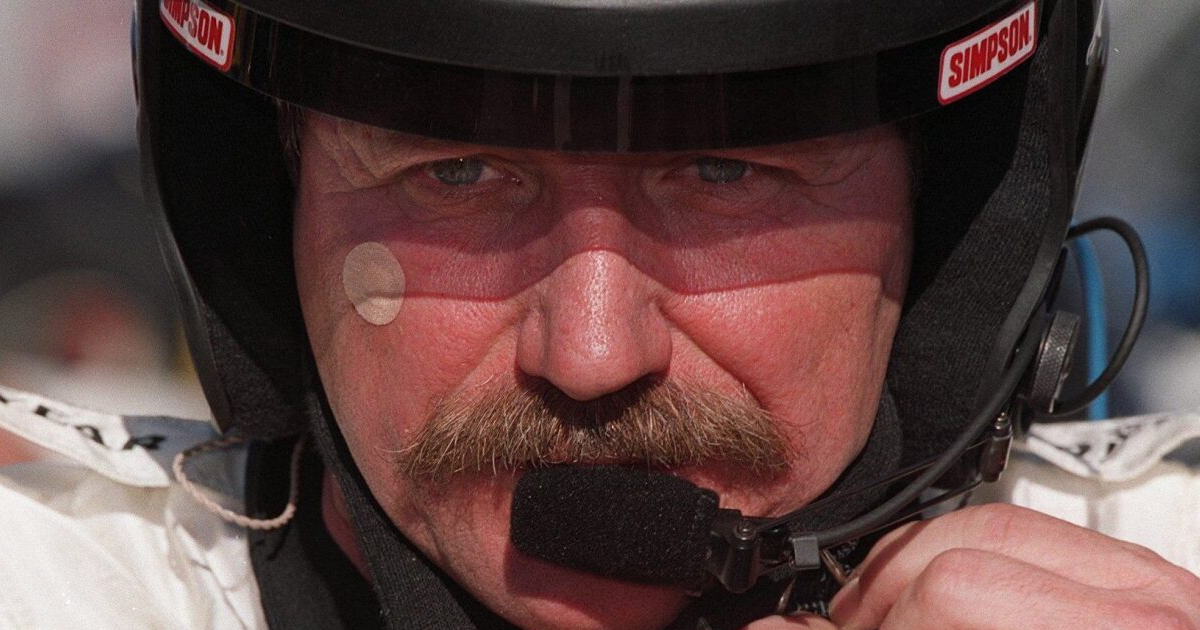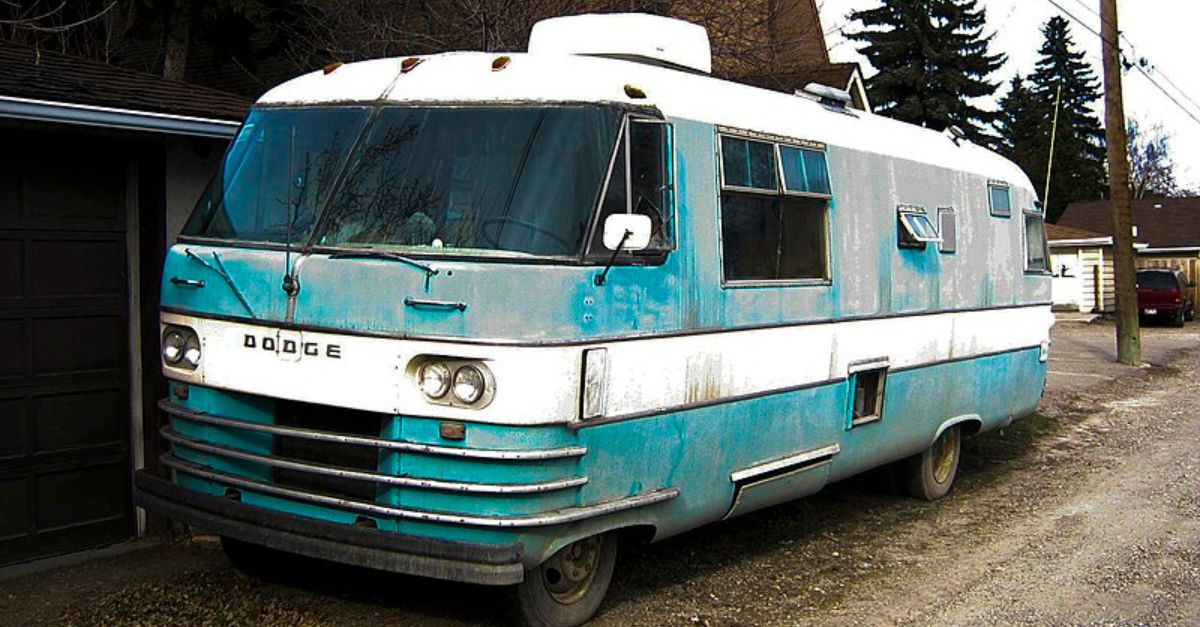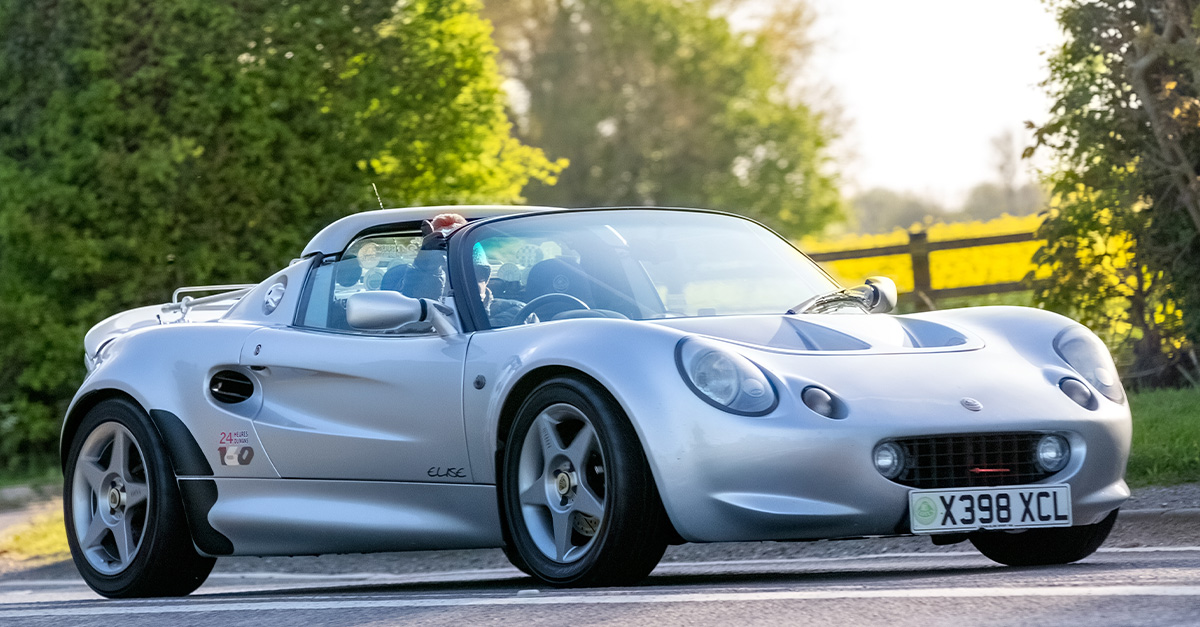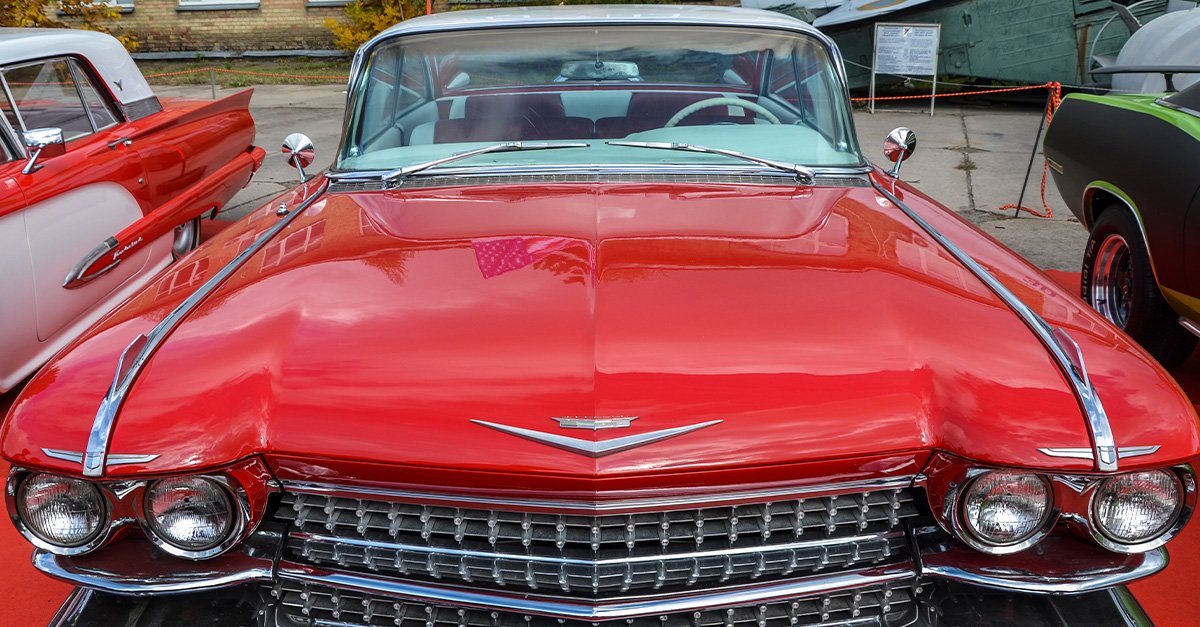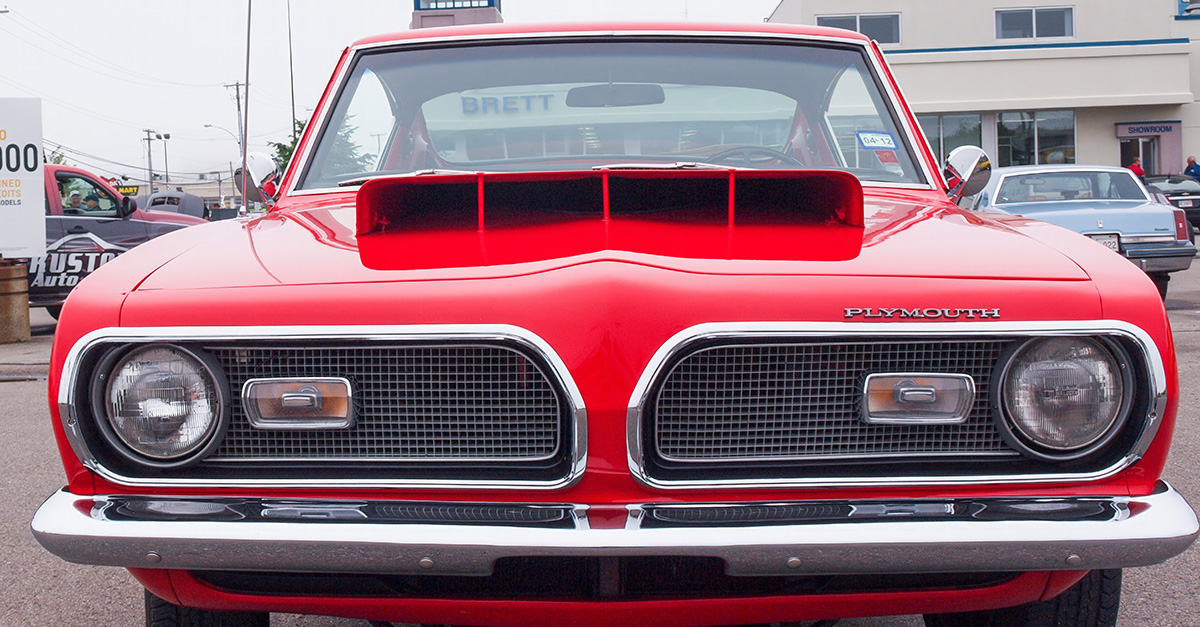From The First To The Last: The Greatest 20th-Century Autos
The 20th century was the year that driving became our primary mode of transportation—thanks, Henry Ford! From the Ford Model T, the world's first mass-affordable automobile to the Lamborghini Miura, the world's first supercar, let's go back in time and explore the greatest cars of the 20th century.
Ford Model T
Of course, we must start our list with the first mass-affordable automobile. Production began on the Ford Model T in the early 20th century, lasting from 1908 to 1927. Designed by Henry Ford, over 15,000 orders were placed within days of the first Model T being built on August 12, 1908. The Model T was sold over 15 million times, making it the most-sold car in history, before the VW Beetle surpassed it.
 ModelTMitch, CC BY-SA 4.0, Wikimedia Commons
ModelTMitch, CC BY-SA 4.0, Wikimedia Commons
AC Cobra
The AC Cobra is a legendary car from the 1960s, hailing from the UK. Fast, agile, handles like a dream... It was built by AC Cars in partnership with Ford Motors from the US, who provided Shelby engines from 1962 onwards. The AC Cobra was a low-profile, two-door roadster powered by a Ford V8 engine that produced 485 hp and a top speed of 164 mph.
 JoachimKohler-HB, CC BY-SA 4.0, Wikimedia Commons
JoachimKohler-HB, CC BY-SA 4.0, Wikimedia Commons
Alfa Romeo Giulietta Sprint Coupé
The Alfa Romeo Giulietta Sprint Coupé was a hand-built coupé built by Alfa Romeo of Italy, between 1954 and 1962. A modified version of the Giulietta, the Sprint Coupé produced 79 hp and had a top speed of 103 mph. Alfa Romeo hired three coachbuilders to design the car, building it to be ultra lightweight while maintaining the classy coupé style of the early 1960s. A true Italian classic.
 Lorenzo Dottorini, Adobe Stock
Lorenzo Dottorini, Adobe Stock
Audi Quattro
The original car by Audi that delivered power to all four of its wheels. The Quattro was released in 1980 and produced until 1991. While some road-going models were built, the Quattro was first and foremost a rally car. Utilizing new rules in 1980 that allowed for four-wheel drive cars, Audi designed a turbocharged 2.1L inline five-cylinder engine. It propelled to immediate success among rally cars, producing 197 hp and a top speed of 137 mph.
 kieranwhite599, CC BY 2.0, Wikimedia Commons
kieranwhite599, CC BY 2.0, Wikimedia Commons
Porsche 911
Of course, no list of this sort would be complete without the Porsche 911. One of the most iconic sports cars of all time. Originally released by Porsche in 1964, Porsche used a rear-mounted 2.0L flat-six engine that produced 130 hp and a top speed of 130 mph. The 911 would undergo decades of innovation, with the most significant being the switch from air- to water-cooled engines in 1998.
 Michael Barera, CC BY-SA 4.0, Wikimedia Commons
Michael Barera, CC BY-SA 4.0, Wikimedia Commons
Corvette Stingray
Widely viewed as a great American classic, the Corvette Stingray was produced between 1963 and 1967. Introducing peaked fenders, a long nose, and short rear-end, the Stingray was distinguishable by its gorgeous exterior and packed plenty of power under the hood, too. Featuring a 7.6L V8 engine that produced 340 hp, the Stingray was everyone's favorite Corvette from the 1960s.
 Andrew Bone, CC BY 2.0, Wikimedia Commons
Andrew Bone, CC BY 2.0, Wikimedia Commons
Ford Mustang
The Ford Mustang is perhaps the most iconic of American vehicles. First produced by Ford in 1964, the Mustang was the namesake of the "pony car" segment of the American automobile market. Selling over a million units in the first two years, the Mustang was America's most popular car in the 1960s and continues to be today.
 Alvintrusty, CC BY-SA 3.0, Wikimedia Commons
Alvintrusty, CC BY-SA 3.0, Wikimedia Commons
Ferrari 250 GTO
One of the most beautiful Ferraris ever released: the 250 GTO. Released to comply with homologation rules, just 36 GTOs were produced between 1964 and 1966. The gorgeous bodywork and design were thanks to Pininfarina, Ferrari's principal design company for decades, meanwhile the engine was a V12 that produced 296 hp. In 2017, a Ferrari 250 GTO sold for $70 million, making it the most expensive Ferrari ever sold. It's also the car that inspired Ferruccio Lamborghini.
 Neil, CC BY 2.0, Wikimedia Commons
Neil, CC BY 2.0, Wikimedia Commons
Austin Seven
Austin was a British car manufacturer from the early 20th century that produced the magnificent Austin Seven. A very similar car to the Ford Model T, this soft-top convertible British version was unusual for Austin Motors: it was small. It had a single cylinder that produced seven horsepower. Did you know that the first BMW—the Dixi—was a licensed Austin 7 design? Talk about paving the way for others.
 Navigator84, CC BY-SA 3.0, Wikimedia Commons
Navigator84, CC BY-SA 3.0, Wikimedia Commons
BMW 328
Speaking of BMWs, the BMW 328 is another car on our list of the greatest of the 20th century. Not just for its looks, either. Although it is a gorgeous vehicle. Made from lightweight aluminum alloys, with a streamlined design and perfectly-distributed weight, the stunning 328 was no slouch under the hood either, producing 80 hp (quite good for the 1936) and a top speed of 96 mph. The 328 was one of the most beautiful pre-War German cars ever made.
 Lothar Spurzem, CC BY-SA 2.0, Wikimedia Commons
Lothar Spurzem, CC BY-SA 2.0, Wikimedia Commons
Citroën 2CV
Onto a triumvirate of French cars, beginning with the Citroën 2CV. This car, conceived by Citroën VP Pierre Boulanger, helped to revolutionize farming in France in the 1930s by allowing farmers that had previously been using horses and buggies to use an automobile instead. It was low-cost, low-maintenance, and simple: producing just nine horsepower from an air-cooled engine.
 Alexander Migl, CC BY-SA 4.0, Wikimedia Commons
Alexander Migl, CC BY-SA 4.0, Wikimedia Commons
Citroën 2CV (Cont'd)
Because it was designed for farmers, the 2CV had been put through a number of rigorous tests, including one where it had to cross a freshly-ploughed field with a basket of eggs on the passenger's seat, without breaking a single one. The convertible bodywork and canvas roll-back sunroof earned the 2CV the nickname: "An umbrella on wheels".
 Mic, CC BY 2.0, Wikimedia Commons
Mic, CC BY 2.0, Wikimedia Commons
Citroën DS19
Another French invention was the Citroën DS19, which set new standards in Europe for build quality, design and driveability. It was the first European car to include disc brakes and a hydropneumatic suspension. It also introduced directional headlights to Europe in 1967. In the 20 years of its production run (1955-1975), Citroën made more than 1.4 million DS19s.
 Klugschnacker, CC BY-SA 3.0, Wikimedia Commons
Klugschnacker, CC BY-SA 3.0, Wikimedia Commons
Citroën Traction Avant
Rounding off our French component of this list: The Citroën Traction Avant was the world's first monocoque automobile, meaning that the body of the car and the chassis are one piece. Released in 1933 and intended for the executive class, to dispel the dissenters and naysayers of the design, Citroën took the extreme step of crash-testing the new body design by driving it off a cliff. Although we don't know what parts of the car survived the test, clearly they went ahead and created a groundbreaking new car design anyway.
 Lothar Spurzem, CC BY-SA 2.0, Wikimedia Commons
Lothar Spurzem, CC BY-SA 2.0, Wikimedia Commons
Ferrari F430
The Ferrari F430 was one of the best-selling Ferraris of all time, produced between 2004 and 2009, selling an estimated 17,000 units. The two-door sports car was powered by a Ferrari V8 engine that produced 483 hp and had a top speed of 196 mph. Borrowing many components from Formula One, the F430 would be the flagship vehicle of the Prancing Horse for five years.
 Alexander Migl, CC BY-SA 4.0, Wikimedia Commons
Alexander Migl, CC BY-SA 4.0, Wikimedia Commons
Jaguar E-Type
It doesn't get much more "quintessentially British" than the Jaguar E-Type. Known as the XK-E in North America, the E-Type began rolling off the line in 1961, with many industry-revolutionizing changes that included an engine that was fitted onto an internal subframe, a 0-60 time of less than seven seconds, and an independent front and rear suspension. It's rumored that Enzo Ferrari himself called the E-Type Jag "the most beautiful car ever made".
 DeFacto, CC BY-SA 4.0, Wikimedia Commons
DeFacto, CC BY-SA 4.0, Wikimedia Commons
Mini Cooper
Another classic from Britain is the Mini Cooper, made by the British Motor Corporation between 1961 and 1971 and 1990 and 2000. The ultimate small car, the 1959 Mini Mark I (the first ever produced) was just 10 feet long and 4 feet wide. Not much about the Mini changed throughout its seven generations of production, but it remains a British classic and one of the most timeless cars of the century.
 DeFacto, CC BY-SA 2.5, Wikimedia Commons
DeFacto, CC BY-SA 2.5, Wikimedia Commons
NSU Ro 80
You could be forgiven for not hearing of the NSU Ro 80—after all, it is a somewhat obscure West German brand from the 1960s. But the Ro 80 was one of the most revolutionary cars on the continent in the 60s thanks to its wedge-shaped design, raised rear end, and its technologically-advanced powertrain. Even though NSU went belly up in 1977, the Ro 80 was voted Car Of The Year in 1966 by international automotive journalists worldwide.
Renault Espace
The French do produce some good cars, don't they? The Renault Espace brought about a 1980s revolution in Europe as it was the first widely-sold minivan on the continent. Made from a monocoque design, with a higher roof and longer wheelbase than competitors, the Espace quickly became popular. Giving Europeans a new option for family vacations, the Espace is still sold today, making it one of Europe's longest-running production cars.
 Thesupermat, CC BY-SA 3.0, Wikimedia Commons
Thesupermat, CC BY-SA 3.0, Wikimedia Commons
Willys Jeep
The Willys Jeep was the first US military vehicle to be mass-produced (in the hundreds of thousands) and to take part in large-scale combat during the Second World War. The 1/4-ton 4x4 was produced between 1941 and 1945, it boasted a 2.2L inline-four engine and was designed to match the German Army's own personnel transport vehicles. Its standardized design gave way to the Jeep CJ, a civilian variant that's now an iconic part of the history of the Jeep brand.
 Lothar Spurzem, CC BY-SA 2.0, Wikimedia Commons
Lothar Spurzem, CC BY-SA 2.0, Wikimedia Commons
Volkswagen Beetle
Of course the Volkswagen Beetle would be on any list of the greatest cars of the past century. Produced between 1938 and 2003, the Beetle was a small family car that was produced under the direction of the German government in the late 1930s, seeking the need for a "People's Car". The Beetle's design didn't change much throughout its 65-year history and more than 21.5 million cars were produced. It's a timeless classic.
 Vwexport1300, CC BY-SA 3.0, Wikimedia Commons
Vwexport1300, CC BY-SA 3.0, Wikimedia Commons
Volkswagen Golf
The VW Golf is another excellent Volkswagen car from the 20th century that's still produced today. Introduced in 1974 as a replacement for the popular Beetle, the Golf Mk I was the first of VW's cars to feature front-wheel drive and front-mounted engines. Released in the US in 1975 with a 1.5L engine that produced just 70 hp, the Golf was clearly all about small-family transport. Now in its eighth generation, the Golf remains one of VW's greatest legacies.
 Rutger van der Maar, CC BY 2.0, Wikimedia Commons
Rutger van der Maar, CC BY 2.0, Wikimedia Commons
Bugatti Type 35
Before Bugatti were producing 250-mph beasts that were designed to break land-speed records, they were producing iconic race cars like the Type 35. With an egg-shaped radiator and a tapered rear, the original Type 35 was first unveiled in the 1924 French Grand Prix in Lyon, with no success. Fast-forward a year and an engine-redesign, and the Bugatti Type 35 was well on its way to its over 1,000 race victories between 1924 and 1930.
 Dontpanic, CC BY-SA 3.0, Wikimedia Commons
Dontpanic, CC BY-SA 3.0, Wikimedia Commons
Land Rover Defender
The Land Rover Defender was the British answer to the Willys Jeep. With a steel ladder chassis and aluminum alloy bodywork, the Defender was the toughest British off-road vehicle of its era. First introduced in 1983, the Defender was focused on being able to conquer any terrain and be equipped with armaments. It is still used today by a number of militaries and police forces worldwide.
 Shelka04, CC BY-SA 3.0, Wikimedia Commons
Shelka04, CC BY-SA 3.0, Wikimedia Commons
Mercedes-Benz 300 SL Coupé
The fastest production car of its era, the Mercedes-Benz 300SL Coupé could reach an astonishing top speed of 162 mph and it had gull-wing doors, so you know it was cool. It also featured an innovative new frame design, made of hollow aluminum tubes, contributing to its lighter weight than competitors. Under the hood, it featured a mechanical fuel injection system that bumped up its horsepower output to 235. A revolution in German engineering in the late 1950s.
 Alexander Migl, CC BY-SA 4.0, Wikimedia Commons
Alexander Migl, CC BY-SA 4.0, Wikimedia Commons
Toyota Prius
The Toyota Prius went on sale in Japan in 1997 as the world's first mass-produced hybrid car. Although not the first hybrid car, the first-generation Prius was only available in Japan, but its second generation unleashed the power of the hybrid on the world. It continues to be one of the best-selling cars with hybrid technology in the world and paved the way for others since its inception.
 Mytho88, CC BY-SA 3.0, Wikimedia Commons
Mytho88, CC BY-SA 3.0, Wikimedia Commons
Ford GT40
The Ford GT40 was the supercar that Ford didn't know it needed to build. Attempting to compete against Ferrari in the 1960s at Le Mans, the GT40 was designed with Ford V8 engines that gave it an output of 425 hp and a staggering top speed of 210 mph. It would win the 1966, 1967, 1968 and 1969 Le Mans races, breaking Ferrari's dominance over the world of motorsport in shocking fashion.
 Calreyn88, CC BY-SA 4.0, Wikimedia Commons
Calreyn88, CC BY-SA 4.0, Wikimedia Commons
1886 Benz Patent Motorwagen
Despite looking like a three-wheeled penny-farthing, the Benz Motorwagen from 1886 is the world's first automobile, making inventor Karl Benz the father of the automobile. Featuring a two-stroke, gasoline-powered engine and three wheels, the "car" was steered by a toothed rack and pivoted the front wheel when the steering wheel turned. A single-speed belt drive was the transmission. Benz unveiled his invention to the public on July 3, 1886, making history as the world's first automobile maker and changing the course of human transport in the process.
 Sicnag, CC BY 2.0, Wikimedia Commons
Sicnag, CC BY 2.0, Wikimedia Commons
1946 Stout Scarab
The Stout Scarab, developed by Stout Engineering Laboratories in the United States, is widely considered the first minivan ever produced. It was also the world's first car who's body was made entirely of fiberglass and had an air suspension. It's long wheelbase, pontoon styling, flexible seating system, and even a fold-away card table made the 1946 Stout Scarab a vehicle with a vision and a 20th-century classic.
 Greg Gjerdingen, CC BY 2.0, Wikimedia Commons
Greg Gjerdingen, CC BY 2.0, Wikimedia Commons
Ferrari 308 GTB/GTS
The Ferrari 308 GTB was produced between 1975 and 1985, with a wedge-shaped body that hid a powerful V8 engine under the hood that produced 252 hp and had a top speed of 170 mph. Driven by Tom Selleck in Magnum PI (1980), the popularity of the show helped increase the popularity of this particular model of Ferrari.
Honda Accord
The Honda Accord was first produced in the United States in 1989—as the first Honda car made in the US when the first Honda plant opened in Marysville, Ohio. Beginning production as a three-door hatchback in 1976, the car became the two-door coupé in 1989 (the version we most know and love today), selling spectacularly around the world thanks to its moderate size and great fuel economy.
 Sergio Valdez, Wikimedia Commons
Sergio Valdez, Wikimedia Commons
Volkswagen T2 Bus
Although not the first generation of the VW Bus, the T2 is the most iconic. Specifically, the Westfalia camping van variant, which included pop-up tops, electrical hook-ups, curtains, water storage, an icebox, and laminated plywood cabinetry. Thousands of these could be seen across the US in the 1960s and 1970s.
 Nxr-at, CC BY-SA 4.0, Wikimedia Commons
Nxr-at, CC BY-SA 4.0, Wikimedia Commons
1984 Chrysler Minivan
Unveiled in 1984, the Chrysler Minivan sought to revolutionize the people-carrying market in the US, as Chrysler created a purpose-built vehicle, complete with two rows of seating for large families. Chrysler saw a gap in the market and filled it with one of the most iconic family vehicles of the 20th century.
 Corvair Owner, CC BY-SA 2.0, Wikimedia Commons
Corvair Owner, CC BY-SA 2.0, Wikimedia Commons
1989 Mazda Miata (North American Version)
The 1989 Mazda Miata was the ultimate sports car for those who couldn't afford luxury in the late 1980s. Small, lightweight, and well-balanced, the two-seater was everyone's favorite 1980s convertible. With more than 1 million sales, it's the best-selling two-seater sports car in the world. Its simplicity and inexpensiveness drove sales figures and made it an icon of low-cost sports cars in the 20th century.
 LouieRBLX, CC BY-SA 4.0, Wikimedia Commons
LouieRBLX, CC BY-SA 4.0, Wikimedia Commons
Lexus LS-400
The Lexus LS-400 may have been one of the most well-designed, rigorously-tested vehicles in history, prior to its release in 1989. After Toyota built the initial concept, it brought together a team of 60 designers, 1,400 engineers, 2,300 technicians, and 200 support staff to build hundreds of prototypes and flagship cars. It logged 1.7 million miles of testing on the LS-400 before unveiling it to the public in 1989. All that preparation worked. The LS-400 was one of the most popular affordable luxury sedans in the world.
 WaddlesJP13, CC BY-SA 4.0, Wikimedia Commons
WaddlesJP13, CC BY-SA 4.0, Wikimedia Commons
McLaren F1
The McLaren F1 was built to break the land speed record in the late 1990s. The two-door coupé featured butterfly doors, four seats, and a naturally-aspirated V12 engine. On March 31, 1997, the McLaren F1 set a new land speed record of 240.1 mph, a feat bested by only five cars since then.
1992 Dodge Viper
The 1992 Dodge Viper is a classic American sports car. Low to the ground, with a long hood and two seats, it first appeared as a concept in 1989 to enthusiastic public reaction, giving Dodge the go-ahead to produce the car. Unveiled three years later, the Viper featured an 8.0L V10 engine that put out 400 hp and had a staggering top speed of 160 mph. It was also surprisingly affordable in 1992, with prices starting at $52,000.
 TaurusEmerald, CC BY-SA 4.0, Wikimedia Commons
TaurusEmerald, CC BY-SA 4.0, Wikimedia Commons
Honda S2000
Honda's Dodge Viper look-alike for the end of the century was the S2000. With over 110,000 units sold between 1999 and 2009, when production ceased, the S2000 was a modern classic within the American imported car community and was the most powerful car in the world by hp per liter output until 2010. The two-door roadster with a detachable roof is a late-century cult classic.
 Calreyn88, CC BY-SA 4.0, Wikimedia Commons
Calreyn88, CC BY-SA 4.0, Wikimedia Commons
Toyota Corolla
Finally, we come to the Toyota Corolla. "Ole' reliable". First produced in 1966, it took eight years for it to become the best-selling car worldwide. Almost any Corolla seems to be completely indestructible and will last for many tens of thousands of miles past its supposed limit. In 1997, it became the best-selling nameplate in the world and as of 2021, over 50 million have been sold worldwide. A legendary, timeless classic.
You May Also Like:
These Are The Celebrities Who Can't Buy A Ferrari
Angelina Jolie's Luxury Car Collection
The Top 10 Best-Selling Cars Ever
 Mytho88, CC BY-SA 3.0, Wikimedia Commons
Mytho88, CC BY-SA 3.0, Wikimedia Commons
Sources:





